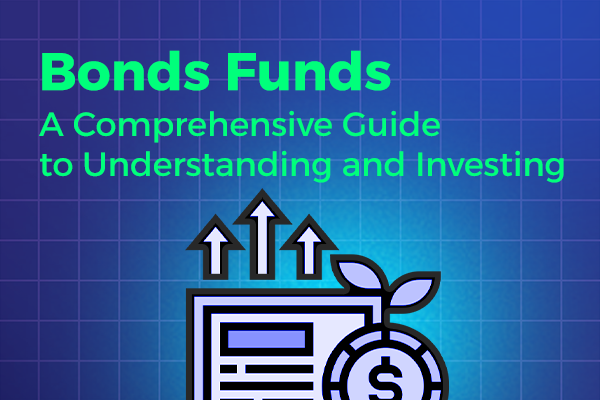Bonds funds are an integral part of any diversified investment portfolio, offering stable returns and a reliable income stream. These funds invest in fixed-income securities such as bonds, with the aim of generating income and preserving capital for investors. In this comprehensive guide, we will explore the various types of bond funds, their mechanics, advantages, and potential risks, to help you make informed decisions when investing in bonds.
There are different types of bond funds that investors can choose from, including bond mutual funds, government bond funds, corporate bond funds, municipal bond funds, and fixed income funds. Each of these funds has unique features and is subject to its own set of risks. By understanding the different types of bond funds, you can choose the one that best suits your investment goals and risk appetite.
Exploring Types of Bond Funds
When it comes to bond fund investing, there are a variety of options available to investors. Understanding the different types of bond funds can help investors make informed investment decisions and create a diversified portfolio that aligns with their financial goals.
Investment-Grade Bond Funds
Investment-grade bond funds invest in high-quality bonds issued by companies or entities with good credit ratings. These funds provide lower yields than high-yield bond funds but tend to offer more stability and less risk. Additionally, investment-grade bond funds can generate steady income for investors who prioritize capital preservation.
High-Yield Bond Funds
High-yield bond funds, also known as junk bond funds, invest in lower-rated bonds issued by companies with a higher risk of default. These funds typically offer higher yields than investment-grade bond funds, but there is also a higher risk of loss. High-yield bond funds may appeal to investors seeking income with a higher risk tolerance and those who believe the economy is poised for growth.
Diversified Bond Funds
Diversified bond funds invest in a mix of bonds from different issuers and industries, providing investors with exposure to a diverse range of fixed income assets. These funds offer a balanced approach between higher-risk and lower-risk investments. Diversified bond funds allow investors to spread their investments across a range of different bond types, which can help mitigate risks and generate returns even when some holdings underperform.
Taxable Bond Funds
Taxable bond funds invest primarily in bonds whose interest income is subject to federal and state income taxes. These funds may invest in a range of fixed-income securities, such as U.S. government bonds or corporate bonds. For investors who have already maxed out their tax-advantaged accounts, such as 401(k)s or IRAs, taxable bond funds can be an efficient way to invest in bonds while generating taxable income.
When considering which type of bond fund to invest in, it’s important to evaluate individual investment objectives and risk tolerance. Additionally, it’s important to consult a financial professional when making investment decisions.
How Bond Funds Work
Bond funds are a type of mutual fund that invests in a diversified portfolio of bonds. When you invest in a bond fund, you are effectively lending money to the bond issuer, which can be a government agency, corporation, or municipality, among others. In return, you receive regular interest payments, and at maturity, you receive your principal back.
Bond funds operate in the broader bond market, which is affected by various economic and financial factors. One of the most significant factors affecting bond prices is changes in interest rates. When interest rates rise, bond prices typically fall, and vice versa.
| Bond Fund Metrics | Description |
| Coupon Payments | Regular interest payments made to bond fund investors based on the bond’s coupon rate. |
| Bond Prices | The market value of the bond, which fluctuates based on various factors, including interest rates, creditworthiness, and supply and demand. |
| Yield to Maturity | The expected return from a bond fund if held until maturity. |
Bond funds come in various types, including government bond funds, corporate bond funds, municipal bond funds, etc. Each type of fund has its unique characteristics, and it is essential to understand how they work before investing. Bond funds can generate regular income for investors, and they also offer capital preservation and diversification benefits as part of a broader investment portfolio. Professional management is key to making informed investment decisions, and it’s essential to work with a qualified financial advisor to determine the appropriate bond funds to include in your portfolio.
Advantages of Investing in Bond Funds
Investing in bond funds provides several advantages for investors looking to diversify their portfolios and generate income while preserving their capital. Some of the key advantages of bond funds include:
| Advantage | Description |
| Diversification | Bond funds invest in a wide range of fixed-income securities, including government, corporate, and municipal bonds. This diversification can help reduce overall portfolio risk and provide more stable returns. |
| Income Generation | Bond funds typically generate regular income for investors in the form of interest payments. This income can supplement other sources of investment income and provide steady cash flow for investors. |
| Capital Preservation | Bond funds can provide a relatively stable source of returns and help investors preserve their capital. While bond fund returns may not be as high as those of equity funds, they can help investors avoid significant losses during market downturns. |
| Professional Management | Bond funds are typically managed by professional fund managers who have extensive experience and expertise in the bond market. This can help investors make more informed investment decisions and take advantage of market opportunities. |
Beyond these advantages, bond funds can also provide opportunities for investors to customize their portfolios. For example, investors can choose bond funds based on their risk tolerance, investment goals, and time horizons. Some bond funds may be more suitable for conservative investors who prioritize capital preservation and income generation, while others may be more suitable for aggressive investors who seek higher levels of return.
Risks and Considerations for Bond Fund Investors
While investing in bond funds has numerous advantages, it’s essential to recognize the potential risks involved. Here are some key risks to consider.
Interest Rate Risk
Interest rate risk is the risk that rising interest rates could reduce the value of a bond fund’s portfolio. When interest rates rise, bond prices usually fall, resulting in lower returns for bond fund investors. It’s crucial to keep in mind that bond funds with longer maturities are more susceptible to interest rate risk than those with shorter maturities.
Credit Risk
Credit risk is the possibility that the issuer of a bond could default on its debt obligations. This risk varies depending on the quality of the bonds held by the fund. Bond funds that invest in higher quality bonds are generally less risky than those that invest in lower quality bonds.
Liquidity Risk
Liquidity risk refers to the possibility that a bond fund will not be able to sell a security quickly or at a reasonable price due to a lack of buyers in the market. This risk is most notable in less actively traded bonds or in times of market stress.
Inflation Risk
Inflation risk is the risk that inflation will erode the purchasing power of the bond fund’s future cash flows. If the fund’s returns do not keep up with inflation, the real value of an investor’s returns will decrease over time.
It’s essential to consider these risks when investing in bond funds and to ensure that they align with your investment goals and risk tolerance. It’s also essential to conduct thorough research and diversify your portfolio to mitigate these potential risks.
Conclusion: Maximizing Your Investment Potential with Bond Funds
In conclusion, investing in bond funds can be a vital component of a diversified investment portfolio. By understanding the different types of bond funds available, investors can tailor their investments to their specific goals and risk appetite.
Benefits of Bond Fund Investing
Bond funds can provide a reliable source of income generation, and their fixed income nature can also aid in capital preservation. Additionally, professional management can help investors navigate the complex mechanics of the bonds market and potentially earn higher returns compared to individual bond investments.
Risks and Considerations
As with any investment, there are potential risks to consider. Interest rate risk, credit risk, liquidity risk, and inflation risk can all impact bond fund performance. Investors should assess their risk tolerance and employ strategies to mitigate these risks, such as diversifying their bond fund investments across different sectors and maturities.
Overall, bond funds can be an excellent addition to a well-rounded investment portfolio. By remaining informed and taking a strategic approach, investors can maximize their investment potential and potentially earn attractive returns while also managing risk.


